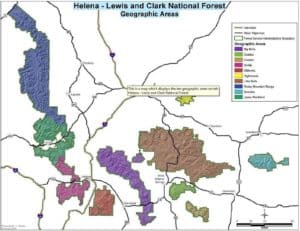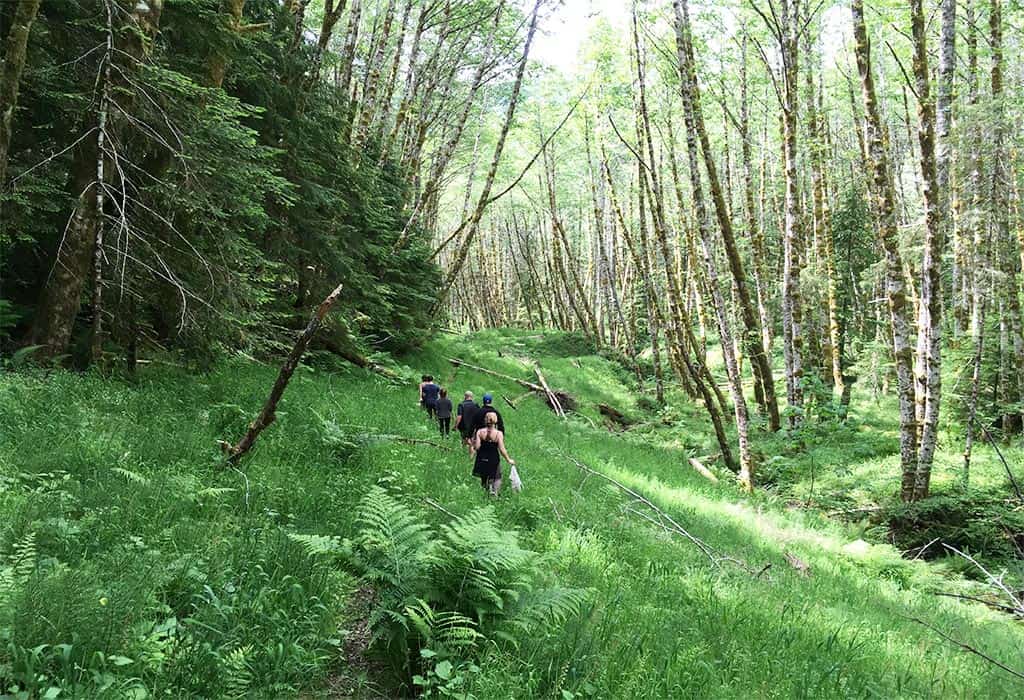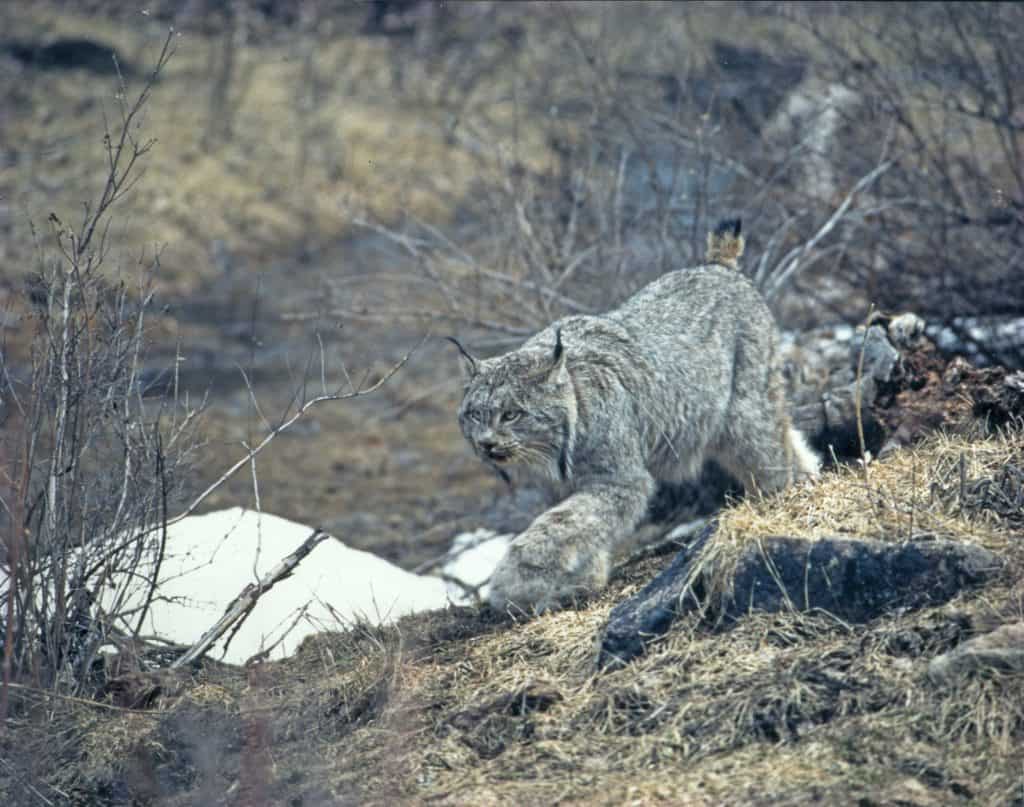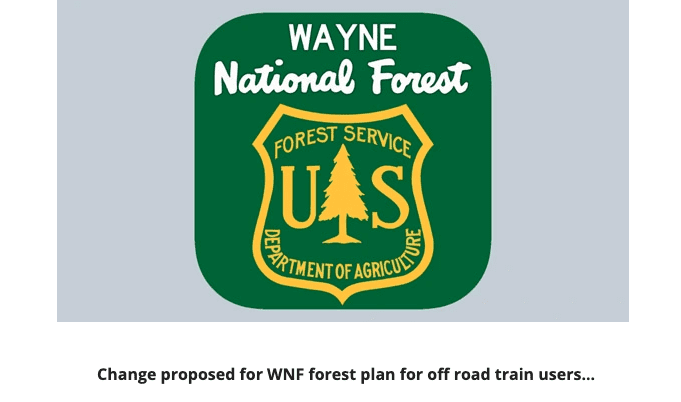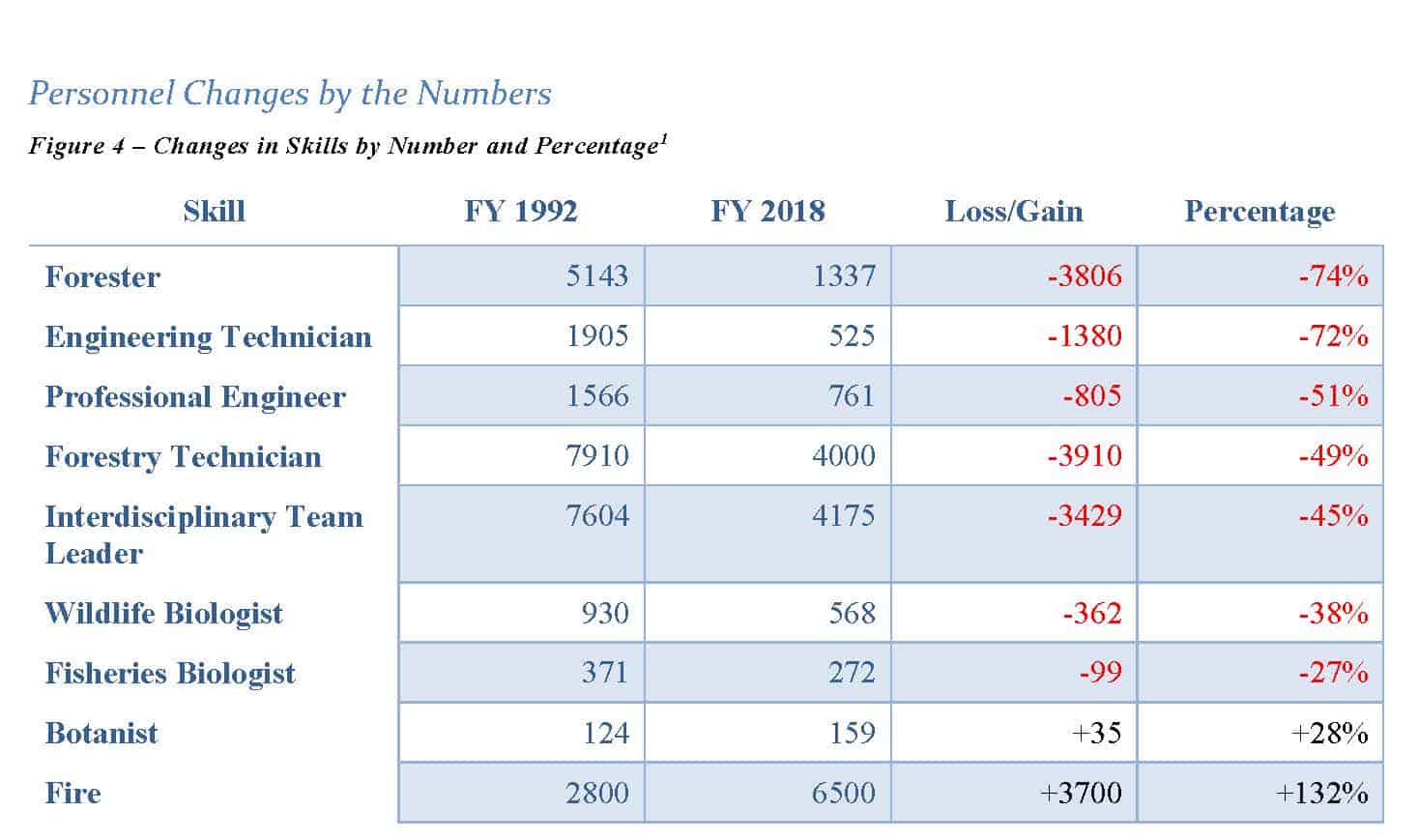Somewhere someone has analyzed this bill.. would appreciate links, because I’m sure I am missing a great deal. Or if you notice something interesting I missed, please put in in comments. Bill Gabbert of Wildfire Today has done a nice summary here and gives attention to the wildland firefighter changes. There’s a lot in this bill about the Forest Service, so this is the first of possibly many posts. Here’s a link to the bill.
Note that usually the USDA gets half the total bucks for each effort. Which makes me wonder whether the Departments will get together to implement some of these efforts, and which ones.
USDA
$50 mill is for preplanning (specifically including PODs) but also training in other areas. with $250 mill for implementing PODs.
$250 mill for prescribed fires.
$100 mill for collaboratives plus five years of funding of old CFLRPs plus some new CFLRPs.
$400 mill for
(i) conducting mechanical thinning and timber harvesting
in an ecologically appropriate manner that
maximizes the retention of large trees, as appropriate
for the forest type, to the extent that the trees promote
fire-resilient stands; or
(ii) precommercial thinning in young growth stands
for wildlife habitat benefits to provide subsistence
resources; and
$100 mill for locally- based organizations’ laborers to modify remove and use flammable vegetation.
$100 mill for post-fire restoration in first three years.
$20 mill for Joint Fire Science Program (research).
I note that in 180 days the FS needs to publish an updated communities at risk map. This bill uses the HFRA definition of WUI.
************************
SEC. 40803. WILDFIRE RISK REDUCTION.
(a) AUTHORIZATION OF APPROPRIATIONS.—There is authorized
to be appropriated to the Secretary of the Interior and the Secretary
of Agriculture, acting through the Chief of the Forest Service,
for the activities described in subsection (c), $3,369,200,000 for
the period of fiscal years 2022 through 2026.
(b) TREATMENT.—Of the Federal land or Indian forest land
or rangeland that has been identified as having a very high wildfire
hazard potential, the Secretary of the Interior and the Secretary
of Agriculture, acting through the Chief of the Forest Service,
shall, by not later than September 30, 2027, conduct restoration
treatments and improve the Fire Regime Condition Class of
10,000,000 acres that are located in—
(1) the wildland-urban interface; or
(2) a public drinking water source area.
(c) ACTIVITIES.—Of the amounts made available under subsection
(a) for the period of fiscal years 2022 through 2026—
(1) $20,000,000 shall be made available for entering into
an agreement with the Administrator of the National Oceanic
and Atmospheric Administration to establish and operate a
program that makes use of the Geostationary Operational
Environmental Satellite Program to rapidly detect and report
wildfire starts in all areas in which the Secretary of the Interior
or the Secretary of Agriculture has financial responsibility for
wildland fire protection and prevention, of which—
(A) $10,000,000 shall be made available to the Secretary
of the Interior; and
(B) $10,000,000 shall be made available to the Secretary
of Agriculture;
(2) $600,000,000 shall be made available for the salaries
and expenses of Federal wildland firefighters in accordance
with subsection (d), of which—
(A) $120,000,000 shall be made available to the Secretary
of the Interior; and
(B) $480,000,000 shall be made available to the Secretary
of Agriculture;
(3) $10,000,000 shall be made available to the Secretary
of the Interior to acquire technology and infrastructure for
each Type I and Type II incident management team to maintain
interoperability with respect to the radio frequencies used by
any responding agency;
(4) $30,000,000 shall be made available to the Secretary
of Agriculture to provide financial assistance to States, Indian
Tribes, and units of local government to establish and operate
Reverse-911 telecommunication systems;
(5) $50,000,000 shall be made available to the Secretary
of the Interior to establish and implement a pilot program
to provide to local governments financial assistance for the
acquisition of slip-on tanker units to establish fleets of vehicles
that can be quickly converted to be operated as fire engines;
(6) $1,200,000 shall be made available to the Secretary
of Agriculture, in coordination with the Secretary of the
Interior, to develop and publish, not later than 180 days after
the date of enactment of this Act, and every 5 years thereafter,
a map depicting at-risk communities (as defined in section
101 of the Healthy Forests Restoration Act of 2003 (16 U.S.C.
6511)), including Tribal at-risk communities;
(7) $100,000,000 shall be made available to the Secretary
of the Interior and the Secretary of Agriculture—
(A) for—
(i) preplanning fire response workshops that
develop—
(I) potential operational delineations; and
(II) select potential control locations; and
(ii) workforce training for staff, non-Federal firefighters,
and Native village fire crews for—
(I) wildland firefighting; and
(II) increasing the pace and scale of vegetation
treatments, including training on how to prepare
and implement large landscape treatments; and
(B) of which—
(i) $50,000,000 shall be made available to the Secretary
of the Interior; and
(ii) $50,000,000 shall be made available to the
Secretary of Agriculture;
(8) $20,000,000 shall be made available to the Secretary
of Agriculture to enter into an agreement with a Southwest
Ecological Restoration Institute established under the Southwest
Forest Health and Wildfire Prevention Act of 2004 (16
U.S.C. 6701 et seq.)—
(A) to compile and display existing data, including
geographic data, for hazardous fuel reduction or wildfire
prevention treatments undertaken by the Secretary of the
Interior or the Secretary of Agriculture, including treatments
undertaken with funding provided under this title;
(B) to compile and display existing data, including
geographic data, for large wildfires, as defined by the
National Wildfire Coordinating Group, that occur in the
United States;
(C) to facilitate coordination and use of existing and
future interagency fuel treatment data, including
geographic data, for the purposes of—
(i) assessing and planning cross-boundary fuel
treatments; and
(ii) monitoring the effects of treatments on wildfire
outcomes and ecosystem restoration services, using the
data compiled under subparagraphs (A) and (B);
(D) to publish a report every 5 years showing the
extent to which treatments described in subparagraph (A)
and previous wildfires affect the boundaries of wildfires,
categorized by—
(i) Federal land management agency;
(ii) region of the United States; and
(iii) treatment type; and
(E) to carry out other related activities of a Southwest
Ecological Restoration Institute, as authorized by the
Southwest Forest Health and Wildfire Prevention Act of
2004 (16 U.S.C. 6701 et seq.);
(9) $20,000,000 shall be available for activities conducted
under the Joint Fire Science Program, of which—
(A) $10,000,000 shall be made available to the Secretary
of the Interior; and
(B) $10,000,000 shall be made available to the Secretary
of Agriculture;
(10) $100,000,000 shall be made available to the Secretary
of Agriculture for collaboration and collaboration-based activities,
including facilitation, certification of collaboratives, and
planning and implementing projects under the Collaborative
Forest Landscape Restoration Program established under section
4003 of the Omnibus Public Land Management Act of
2009 (16 U.S.C. 7303) in accordance with subsection (e);
(11) $500,000,000 shall be made available to the Secretary
of the Interior and the Secretary of Agriculture—
(A) for—
(i) conducting mechanical thinning and timber harvesting
in an ecologically appropriate manner that
maximizes the retention of large trees, as appropriate
for the forest type, to the extent that the trees promote
fire-resilient stands; or
(ii) precommercial thinning in young growth stands
for wildlife habitat benefits to provide subsistence
resources; and
(B) of which—
(i) $100,000,000 shall be made available to the
Secretary of the Interior; and
(ii) $400,000,000 shall be made available to the
Secretary of Agriculture;
(12) $500,000,000 shall be made available to the Secretary
of Agriculture, in cooperation with States, to award community
wildfire defense grants to at-risk communities in accordance
with subsection (f);
(13) $500,000,000 shall be made available for planning
and conducting prescribed fires and related activities, of
which—
(A) $250,000,000 shall be made available to the Secretary
of the Interior; and
(B) $250,000,000 shall be made available to the Secretary
of Agriculture;
(14) $500,000,000 shall be made available for developing
or improving potential control locations, in accordance with
paragraph (7)(A)(i)(II), including installing fuelbreaks
(including fuelbreaks studied under subsection (i)), with a focus
on shaded fuelbreaks when ecologically appropriate, of which—
(A) $250,000,000 shall be made available to the Secretary
of the Interior; and
(B) $250,000,000 shall be made available to the Secretary
of Agriculture;
(15) $200,000,000 shall be made available for contracting
or employing crews of laborers to modify and remove flammable
vegetation on Federal land and for using materials from treatments,
to the extent practicable, to produce biochar and other
innovative wood products, including through the use of existing
locally based organizations that engage young adults, Native
youth, and veterans in service projects, such as youth and
conservation corps, of which—
(A) $100,000,000 shall be made available to the Secretary
of the Interior; and
(B) $100,000,000 shall be made available to the Secretary
of Agriculture;
(16) $200,000,000 shall be made available for post-fire restoration
activities that are implemented not later than 3 years
after the date that a wildland fire is contained, of which—
(A) $100,000,000 shall be made available to the Secretary
of the Interior; and
(B) $100,000,000 shall be made available to the Secretary
of Agriculture;
(17) $8,000,000 shall be made available to the Secretary
of Agriculture—
(A) to provide feedstock to firewood banks; and
(B) to provide financial assistance for the operation
of firewood banks; an
Sec. 40801 Legacy Roads and Trails
When I was doing the review of environmental groups’ views, this is one of the rare programs that everyone from AFRC to WEG supported. Lots of specifics I’m not posting. We’ve been discussing transportation planning and I thought that this was an interesting take:
‘‘(d) IMPLEMENTATION.—In implementing the Program, the Secretary
shall ensure that—
‘‘(1) the system of roads and trails on the applicable unit
of the National Forest System—
‘‘(A) is adequate to meet any increasing demands for
timber, recreation, and other uses;
‘‘(B) provides for intensive use, protection, development,
and management of the land under principles of
multiple use and sustained yield of products and services;
‘‘(C) does not damage, degrade, or impair adjacent
resources, including aquatic and wildlife resources, to the
extent practicable;
‘‘(D) reflects long-term funding expectations; and
‘‘(E) is adequate for supporting emergency operations,
such as evacuation routes during wildfires, floods, and
other natural disasters; and
‘‘(2) all projects funded under the Program are consistent
with any applicable forest plan or travel management plan.
*************
AUTHORIZATION OF APPROPRIATIONS.—There is authorized
to be appropriated to the Secretary of Agriculture to carry out
section 8 of Public Law 88–657 (commonly known as the ‘‘Forest
Roads and Trails Act’’) $250,000,000 for the period of fiscal years
2022 through 2026.
